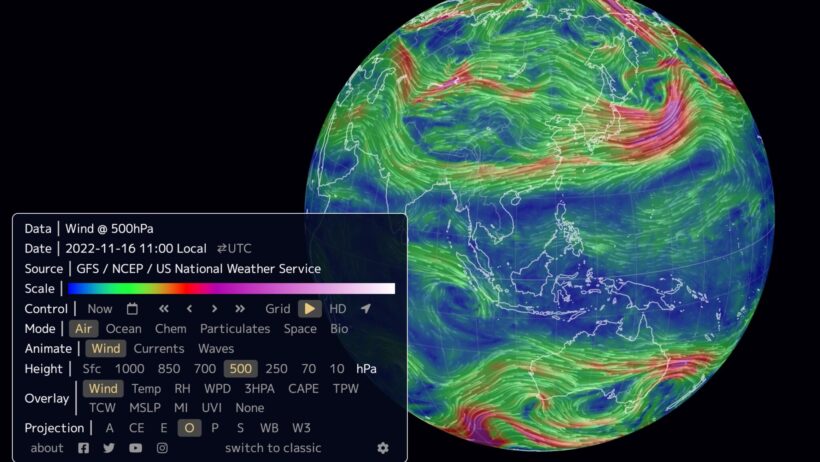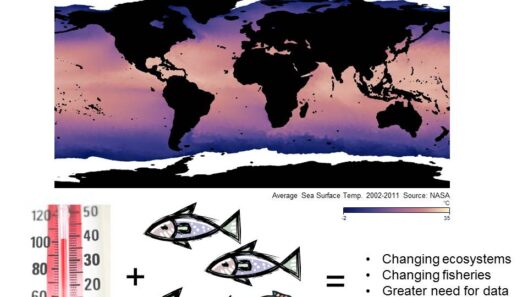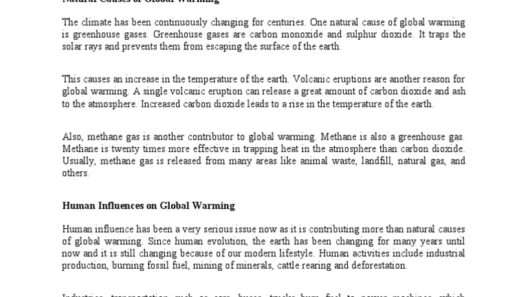In the complex arena of climate change, particulate matter represents a critical yet often underestimated component contributing to global warming. Comprising a myriad of tiny particles suspended in the atmosphere, particulate matter (PM) not only originates from natural sources like wildfires and volcanic eruptions but also from anthropogenic activities, including industrial emissions, vehicle exhaust, and combustion of fossil fuels. These particles come in various sizes, mainly categorized into PM10 and PM2.5, denoting their diameter in micrometers. This classification is essential as it determines their capacity to infiltrate human respiratory systems and influence environmental systems.
To comprehend the role of particulate matter in climate dynamics, it is crucial to unravel its contributing mechanisms. When these minuscule particles accumulate in the atmosphere, they present a dual menace. First, they directly affect climate warming through a process called radiative forcing. The presence of particulate matter in the atmosphere scatters and absorbs sunlight, which can lead to localized warming. Specifically, black carbon, a component of PM, possesses significant heat-absorbing qualities. This phenomenon is especially pronounced in polar regions where black carbon settles on ice and snow, creating a darker surface that absorbs more solar radiation, consequently accelerating the melting of ice sheets and glaciers.
Moreover, while particulate matter can lead to the cooling of the atmosphere through the reflection of sunlight, particularly with sulfate aerosols, the overall effect of these particles pushes the climate system towards a warmer state. These particles not only trap heat but also affect cloud formation and precipitation patterns. In this regard, they act as cloud condensation nuclei (CCN), altering the microphysical properties of clouds. Enhanced cloud formation can increase rainfall in one area while simultaneously causing drought in another, illustrating the complex interplay of particulate matter with atmospheric processes.
The health implications of particulate matter cannot be overlooked either. Research consistently reveals a correlation between exposure to particulate pollution and respiratory ailments, cardiovascular conditions, and premature mortality. Vulnerable populations, including children and the elderly, face heightened risks, intensifying public health crises amidst shifting climates. As particulate matter contributes to global warming, it forms a feedback loop: warmer temperatures can exacerbate pollution levels, leading to an alarming cycle of deterioration in both environmental and human health.
Furthermore, the geographic distribution of particulate matter and its sources highlights significant disparities. Urban areas, often exacerbated by high traffic congestion and industrial activity, experience elevated levels of air pollution, directly impacting local ecosystems and contributing to broader climate change. Rural regions, particularly those reliant on agriculture, face additional challenges from the burning of biomass, which releases significant amounts of particulate matter into the atmosphere.
Additionally, the international dimensions of particulate matter pollution pose another layer of complexity to addressing climate change. The transboundary nature of air pollution means that particles originating in one country can gravitate across borders, affecting air quality and climate conditions in neighboring regions. This necessitates cooperative international policies and actions aimed at mitigating emissions of particulate matter while fostering sustainable development.
Efforts to mitigate the effects of particulate matter on climate change are varied and multifaceted. Policy initiatives aimed at reducing emissions, promoting cleaner technology, and enhancing public transportation are vital. Transitioning to renewable energy sources, such as solar and wind, when combined with stricter regulations on fossil fuel combustion, can significantly decrease the output of harmful particulates. Moreover, reforestation and sustainable agricultural practices can play a reparative role in reducing particulate emissions while simultaneously enhancing carbon sequestration processes.
Public awareness and education regarding the impacts of particulate matter are equally crucial. Campaigns targeting communities can foster a collective understanding of air quality issues and inspire individual actions. Grassroots movements that advocate for cleaner air and greener technologies play an essential role in elevating the discourse around climate change, ensuring localized efforts are aligned with global objectives.
Technological innovations further provide potential pathways to combat particulate matter emissions. Advances in filtration systems, emission controls, electric vehicles, and alternative energy technologies represent hopeful strides. In parallel, ongoing research into the mechanisms and impacts of particulate matter on climate systems can yield vital insights, informing policy and practice as society grapples with the escalating climate crisis.
In conclusion, particulate matter places an invisible yet formidable burden on the fight against global warming. Its contributions to climate change are insidious, influencing not only environmental conditions but human health and socioeconomic disparities. Addressing this multifaceted threat requires a holistic approach that encompasses policy, technology, and public engagement. The imperative for robust action is clear: tackling particulate matter emissions harmonizes public health and environment concerns while fortifying resilience against a warming world. Failure to address this issue will continually jeopardize both planetary and human well-being, underscoring the urgent need for a concerted response to this invisible threat.






